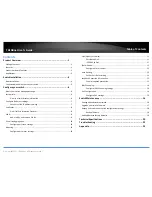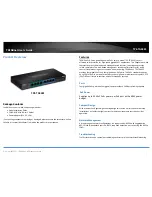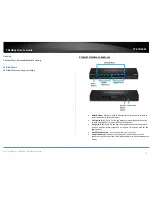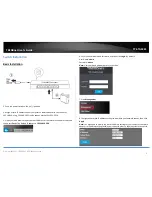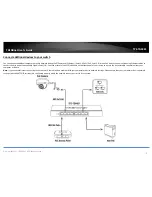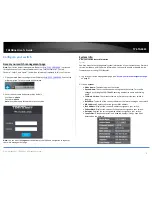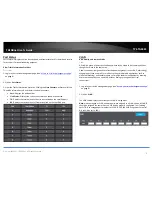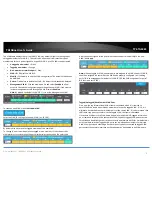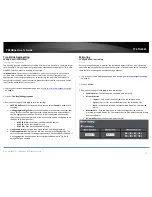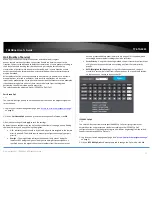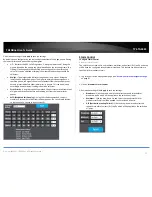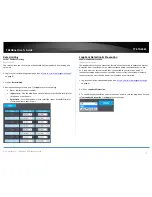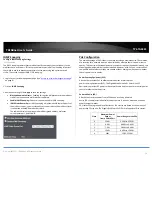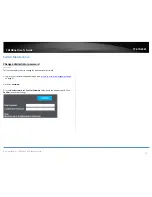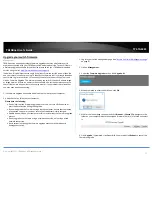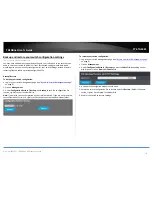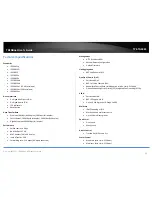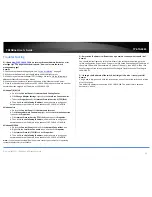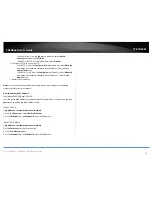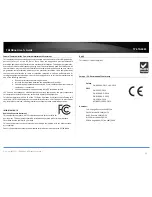
© Copyright 2017 TRENDnet. All Rights Reserved.
TRENDnet User’s Guide
TPE-TG44ES
11
QoS (Quality of Service)
When a port on an Ethernet switch becomes oversubscribed, its egress
queues contain more packets than the port can handle in a timely manner. In this
situation, the port may be forced to delay the transmission of some packets, resulting in
the delay of packets reaching their destinations. A port may be forced to delay
transmission of packets while it handles other traffic, and, in some situations, some
packets destined to be forwarded to an oversubscribed port from other switch ports
may be discarded.
Minor delays are often of no consequence to a network or its performance. But there
are applications, referred to as delay or time sensitive applications, which can be
impacted by packet delays. Voice transmission and video conferences are two examples.
If packets carrying data in either of these cases are delayed from reaching their
destination, the audio or video quality may suffer.
The switch supports port-based QoS or IEEE 802.1p QoS (CoS).
Port-Based QoS
QoS
The switch will assign priority to each queue per port based on the weight assignment
for each queue.
1. Log into your switch management page (see “
Access your switch management page
”
on page 6).
2. Click on Port-Based QoS and when prompted to change the QoS mode, click OK.
3. Review the settings. Click Apply to save the settings.
By default, queue configuration can be found at the bottom of the page, queue 0 being
the lowest priority and queue 3 being the highest.
1-8 – Indicates the port number. By default, all ports are assigned to the lowest
priority queue 0. This would require manually configuration to apply per port
priority.
Weight – The weight value indicates the queue priority value 1 being the
lowest and 32 being the highest. The higher the weight value assigned to a
specified queue, the higher the amount of packets from that queue are sent
out and processed before other lower priority queues. This can be adjusted
accordingly however default settings should be sufficient.
Strict Priority - Using this scheduling method, the port transmits all frames out
of higher priority queues before transmitting any from the lower priority
queues.
WFQ (Weighted Fair Queuing) – Using this scheduling method, the port
transmits a set number of bits from random queues, in a round robin fashion,
so that each has a chance to transmit traffic.
IEEE 802.1p QoS
QoS
The switch will accept frames with specified 802.1p CoS priority tags from other
network devices and process and schedule according to the IEEE 802.1p QoS
configuration but will not add priority tags to new frames originating from the switch.
Supports passthrough 802.1p QoS only.
1. Log into your switch management page (see “
Access your switch management page
”
on page 6).
2. Click on IEEE 802.1p QoS and when prompted to change the QoS mode, click OK.
Summary of Contents for TPE-TG44ES
Page 1: ...TRENDnet User s Guide Cover Page ...
Page 30: ......


